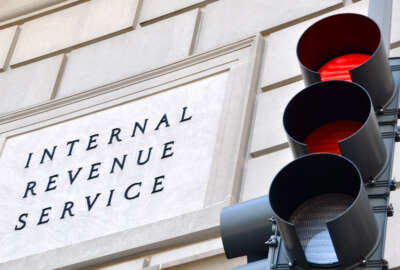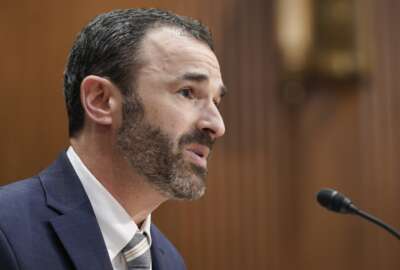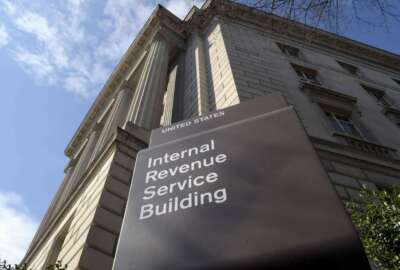IRS workforce surpasses 100,000 employees, but faces ‘war of attrition’ retaining staff
An IRS watchdog warns the agency faces challenges hiring enough employees to replace the number of employees it expects to retire in the coming years.
Recent data shows the IRS grew its workforce to more than 100,000 total employees, a staffing milestone the agency hasn’t cracked in nearly 30 years.
But keeping that level of staffing won’t be easy. Congress cut 50% of the agency’s multiyear modernization funds under the Inflation Reduction Act, with some lawmakers vowing to roll back even more of these funds.
The IRS saw a $20 billion cut to its modernization fund last month when Congress passed a continuing resolution to avoid a government shutdown.
Lawmakers did not include language in the stopgap spending bill to prevent an automatic $20 billion cut in a previous CR that ran from Oct. 1 through Dec. 20 last year. Congress cut another $20 billion in IRS funding during 2023 negotiations to raise the nation’s debt limit.
IRS Commissioner Danny Werfel told reporters last month that further cuts to its Inflation Reduction Act funding would limit its ability to keep hiring.
“If the $20 billion is rescinded from the IRS budget, it would significantly hamper our ability to maintain the rightsized workforce to get this work done,” Werfel said. “It would mean that more times than I think is appropriate tax evaders would get away with evading their taxes.”
Meanwhile, an IRS watchdog warns the agency faces challenges in hiring enough employees to replace the number of employees it expects to retire in the coming years.
National Taxpayer Advocate Erin Collins, in her annual report to Congress released Wednesday, said the IRS’ challenges in recruiting, hiring, training and retaining employees are “hindering its ability to achieve transformational change” in taxpayer service and tax administration.”
The agency is using its Inflation Reduction Act funding to rebuild its workforce, after more than a decade of budget cuts.
The IRS had more than 100,000 total full-time employees on board at the end of fiscal 2024 — up from nearly 90,000 employees the year prior.
The agency crossed the 100,000-employee threshold faster than expected. Werfel told reported he planned to get the agency to 100,000 employees by 2027.
The IRS, in its most recent strategic operating plan, planned to get its workforce up to 102,500 total employees by 2029.
Agency data shows the IRS has its largest workforce since 1997 when it had more than 101,000 full-time employees.
The agency’s total headcount hovered around the 100,000-employee mark for much of the late 1990s and early 2000s, but saw major declines in staffing in the 2010s amid budget cuts.
Over the past decade, understaffing led to prolonged wait times for assistance, delays in processing returns and refunds and an increase in errors.
The IRS is tapping into Inflation Reduction Act funds to increase staffing, especially for taxpayer services, but the report states “IRS success hinges on its ability to recruit, hire, train and retain a skilled workforce.”
“Hiring is just the beginning of the quest to improve service and provide taxpayers the experience and assistance they deserve,” the National Taxpayer Advocate wrote.
By the time Congress passed the Inflation Reduction Act in 2022, the IRS workforce hit its lowest point since the 1970s.
A high rate of attrition among its aging workforce, however, makes it harder for the IRS to increase its headcount. The agency hired 19,482 total employees in fiscal year 2024. But 9,741 employees left the agency the same year.
“The IRS struggles with high attrition rates, which offset hiring successes. The agency is constantly fighting a war of attrition and taking two steps forward and one step back when it comes to hiring and retaining talent,” the report states.
The IRS in prior decades counted on most of its employees to stay in the civil service for most, if not all, of their careers. But the National Taxpayer Advocate said the IRS may face challenges getting IRS employees to stay on the job longer than three to five years, although the report suggests more data is needed to confirm this trend.
The report states that 63% of the current IRS workforce is eligible to retire within six years, and “challenges associated with maintaining a sufficient employee headcount may worsen.”
More than 40% of the agency’s employees work in taxpayer services. This includes customer service representatives, tax examiners, clerks and employees in accounts management.
Over the past two years, the IRS saw 16-36% attrition within this segment of the workforce.
“With high attrition rates in key divisions, taxpayers risk ongoing poor service and tax administration inefficiencies if these challenges persist,” the report states.
The report states that current job postings are not reaching desired candidates, the agency struggles to compete with the private sector for applicants, and that an “inflexible hiring and onboarding” deters applicants.
The IRS saw its overall time-to-hire go from 85 days in FY 2023 to 93 days in FY 2024 — a 9% increase.
The report also states that the IRS training program “is not ready for the influx of new employees,” and that the agency lacks comprehensive data on which recruitment strategies have been most effective.
Employees working in taxpayer service programs cover everything from identity theft to large-dollar refunds to Employee Retention Credits. The National Taxpayer Advocate said employees in these programs need about three years of training and work experience to be fully prepared to assist taxpayers.
“It takes time to develop the skillset necessary to give taxpayers a good experience,” the report states.
The IRS is also competing with the private sector for in-demand candidates.
The Congressional Budget Office estimated in 2022 that federal employees with bachelor’s degrees earned 10% less than their private sector counterparts. Federal employees earned 17% less than nonfederal equivalents, and 29% if they held a professional degree.
The National Taxpayer Advocate warned that the pay gap between what the IRS and the private sector can offer is widening and “hampering competitiveness.”
“While the agency cannot win dollar-for-dollar bidding wars, it can focus on distinctive nonmonetary benefits that set the IRS apart from other employers,” the report states. “The satisfaction of contributing to public service and making a difference, combined with quality-of-life advantages, can attract professionals willing to accept reduced pay for meaningful work.”
The IRS is also struggling to compete with better offers elsewhere in the federal government.
The National Taxpayer Advocate said agencies such as the Federal Deposit Insurance Corporation, Securities and Exchange Commission, and Treasury’s Office of the Comptroller of the Currency offer higher salaries outside the General Schedule, “further disadvantaging the IRS.”
Copyright © 2025 Federal News Network. All rights reserved. This website is not intended for users located within the European Economic Area.
Jory Heckman is a reporter at Federal News Network covering U.S. Postal Service, IRS, big data and technology issues.
Follow @jheckmanWFED






